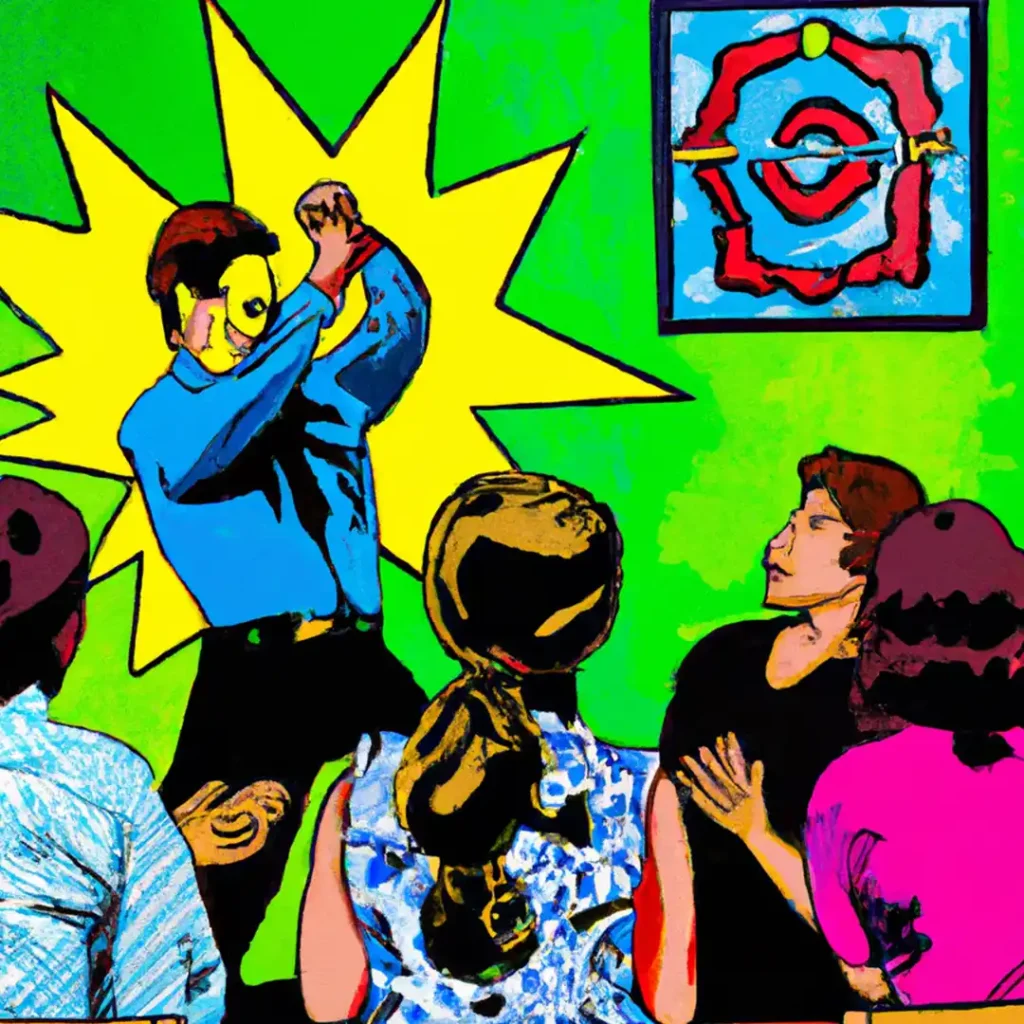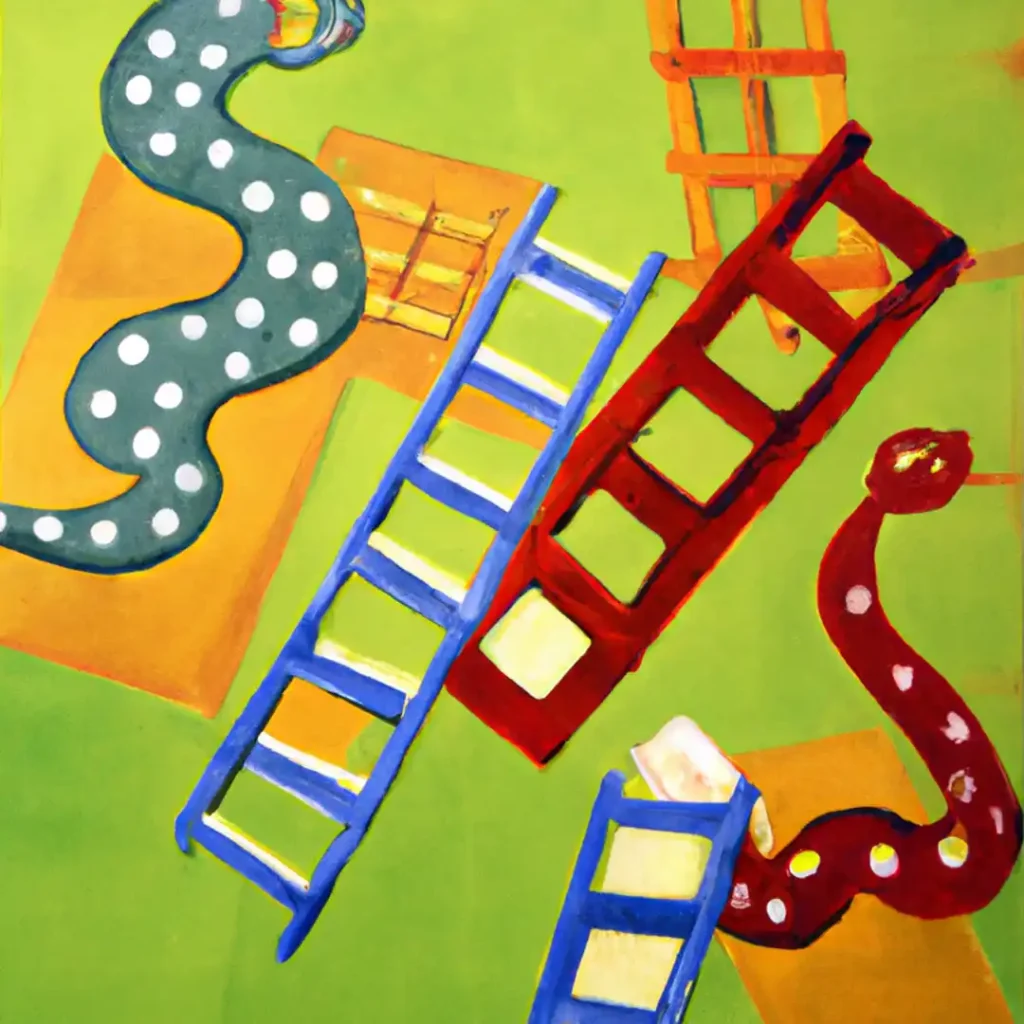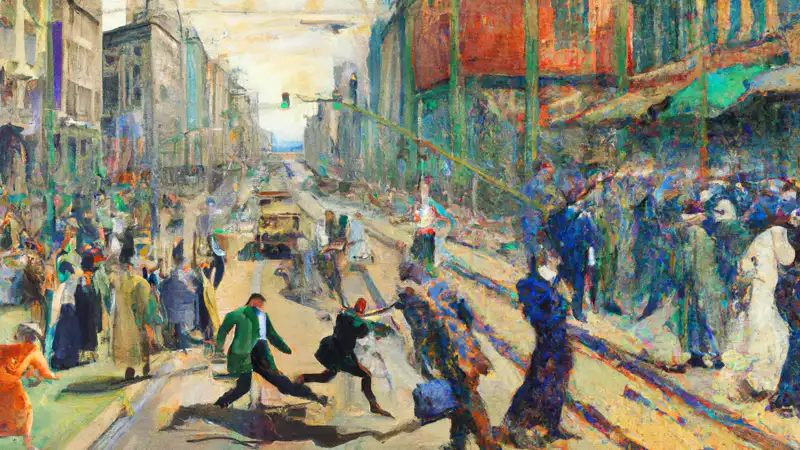Help students find their career paths with our 25 career games designed specifically for high school students. These interactive career exploration activities will provide a fun and engaging way to learn about various professions and equip teens with essential insights and skills for their future careers. From virtual job simulations to role-playing scenarios, each game offers a unique pathway to understanding different industries and job roles, helping students make informed decisions about their educational and career paths. This guide is perfect for motivating and inspiring high school students in a careers classroom.
How to Implement: Set up the classroom with pairs of chairs facing each other. Assign each student a profession (or allow them to choose) and give them a few minutes to prepare. Students then sit face-to-face with a partner, discussing their assigned profession. After a set time (e.g., 2-3 minutes), one row of students rotates, and the process continues until everyone has “dated” everyone else. It’s such a fun activity!
Benefits: The fast-paced nature of this activity ensures high engagement levels. Students learn to convey key information concisely and listen actively. It also exposes them to a multitude of professions in a short time, broadening their perspectives.
How to Implement: This game operates much like 20 Questions. Provide each student with a card containing a specific job title. The student then offers three hints related to that job, without revealing the profession directly. Classmates then take turns guessing the profession based on the provided clues.
Benefits: “Guess My Job” encourages critical thinking and deductive reasoning. It also fosters a deeper understanding of various professions, as students must identify key aspects of a job role to give hints that are neither too vague nor too obvious.
How to Implement: This game is inspired by the classic Taboo game. Create cards for various professions and list four or five “taboo” words associated with each job that students cannot use when describing it. For instance, for “Dentist”, taboo words might include “teeth,” “brush,” “drill,” and “gum.” A student picks a card and tries to describe the profession to their classmates without using the taboo words.
Benefits: Career Taboo pushes students to think outside the box and describe professions in unconventional ways. It refines communication skills and expands vocabulary, as students search for alternative words and phrases to describe familiar roles.
How to Implement: Begin by creating bingo cards, each filled with a variety of professions rather than numbers. These professions can range from common ones like “doctor” and “engineer” to more niche roles like “marine biologist” or “set designer.” Armed with a stack of descriptions for each job, read out the duties and responsibilities of each profession one by one. As students recognize a profession described, they mark it off on their bingo card. The first student to get a full row shouts “Bingo!”
Benefits: Career Bingo not only introduces students to a plethora of job roles but also encourages active listening. As they attentively tune in to the nuances of each profession, they’re exposed to new possibilities and broadened horizons. It’s a great way to begin conversations about what interests them and what doesn’t.

How to Implement: Write down various job titles on individual slips of paper. Each student then randomly selects a slip and, without revealing their chosen profession, acts it out in front of the class. Their peers then guess the job based on the student’s non-verbal cues and actions.
Benefits: This activity is not only engaging but also pushes students to think about the most defining and recognizable tasks of each profession. It’s an exercise in non-verbal communication, creativity, and comprehension, as students must break down complex job roles into simple, easily understood actions.
How to Implement: Prepare a list of professions and their average annual salaries (without disclosing the amounts). Students are tasked with ranking these professions based on what they believe the salaries might be. After making their guesses, reveal the figures and discuss the reasons behind wage disparities, considering factors like education, demand, experience, and societal value.
Benefits: This activity is an eye-opener for many students, as it challenges preconceived notions about job compensation. By discussing the factors that influence salaries, students gain a better understanding of the economic landscape of the job market. The game also prompts deeper reflections on the true value of a job and the balance between passion and financial rewards.
How to Implement: On one set of cards, list various job titles. On another set, jot down the primary skills associated with those jobs. Mix up the skill cards and distribute them to the students. Their task? Match the skills to the appropriate job. This can be done individually or in small groups.
Benefits: This game sheds light on the specific skills required for different professions, helping students recognize where their strengths might align with potential careers. Furthermore, it underscores the importance of skill development in the path to professional success.
How to Implement: Prepare cards with different professions listed, along with a brief description of the job’s main responsibilities. Each student receives a card and has some time to internalize their role. Later, they pair up or form small groups to describe their day-to-day tasks in that profession to their peers, who then ask questions or seek clarity.
Benefits: Role-playing is a powerful tool for empathy and understanding. By stepping into the shoes of various professionals, even if just for a short time, students gain a firsthand glimpse into the challenges, rewards, and intricacies of different job roles. Moreover, this activity fosters communication skills and promotes curiosity.
How to Implement: Divide students into groups and assign each a specific profession or allow them to choose one of interest. Provide them with chart paper or access to digital mind-mapping tools. Groups then brainstorm and map out all they know about the profession, from required skills to potential work environments and associated tasks.
Benefits: Mind mapping is an effective tool for visual learners. The activity encourages collaborative learning, where students pool their knowledge and insights. It also aids in identifying gaps in understanding, prompting further research and exploration of the chosen professions. This is perhaps the best way to introduce career opportunities at any grade level.
Click here for the full Career Exploration Mind Map lesson plan.
10. Profession Timeline
How to Implement: Hand out sheets of paper or use a digital platform where students can create timelines. Assign or let them select a profession, then task them with plotting out the educational journey and work experiences needed to achieve that career. This might include college degrees, internships, certifications, and more.
Benefits: By visualizing the steps needed to reach a career goal, students gain a clearer understanding of the dedication, time, and milestones involved. It promotes forward-thinking and long-term planning, enabling students to set tangible targets for their personal career decisions.
11. Job Scenario Problem Solving
How to Implement: Prepare cards with hypothetical workplace challenges related to various professions. Examples might include handling a medical emergency as a doctor, resolving a client conflict as a PR specialist, or designing a bridge to withstand specific environmental factors as a civil engineer. Distribute the cards to the students and ask them to discuss or write about how they would tackle the given scenario.
Benefits: This activity throws students into real-world situations, albeit hypothetically, forcing them to think on their feet. It builds problem-solving skills, cultivates creativity, and deepens understanding of the practical challenges faced in different professions. Furthermore, it allows students to gauge their interest and aptitude for various scenarios, potentially guiding them towards or away from a variety of careers.
12. Dream Day Diary Entry
How to Implement: Prompt students to imagine a day in their dream job. What would they do? Who would they meet? What challenges would they face? Students then write a diary entry detailing this day, capturing both the highs and lows.
Benefits: This introspective activity fosters self-awareness and creativity. It encourages students to dive deep into their passions, visualize their aspirations, and reflect on what they truly desire in a career. Reading or sharing these entries can also inspire classmates and highlight diverse aspirations within the class.
13. Skill Auction
How to Implement: Prepare a list of skills associated with various jobs. Assign each student a set amount of “money.” As you describe each skill, students decide if they want to “purchase” it, with the highest bidder winning. The goal isn’t necessarily to spend all their money but to acquire the skills they find most valuable or intriguing.
Benefits: This game emphasizes the value of diverse skills in the job market. Students reflect on which skills resonate most with their interests and aspirations. It also introduces the concept of demand and value in the job market, prompting discussions on why certain skills might be more “expensive” than others. Young people find this game a fun way to explore essential skills.
14. Profession Pictionary Game
How to Implement: Just like traditional Pictionary, but with a career twist. Create cards with various job roles. Students select a card and draw an image associated with that profession without using any words or numbers, while their classmates try to guess the job.
Benefits: Visual representation and interpretation are at the heart of this activity. Students must think creatively to depict complex job roles through simple drawings. It promotes teamwork, creativity, and reinforces the visual aspects of various professions.
15. Career Pathway Snakes & Ladders

How to Implement: Adapt a traditional Snakes & Ladders game board to represent a career journey. Ladders signify promotions, positive networking opportunities, or successful job interviews, propelling players forward. Snakes, on the other hand, can represent setbacks like failed projects, job loss, or workplace conflicts, causing players to move backward. Play the game with dice and tokens as usual.
Benefits: This game provides a visual representation of the ups and downs of a career. Students learn that progress isn’t always linear, and setbacks can be valuable learning experiences. It’s a playful way to introduce the concept of perseverance and resilience in one’s career.
16. Job Hat Guess
How to Implement: Collect hats or props that symbolize different professions—e.g., a chef’s hat, firefighter helmet, artist’s beret. A student chooses a hat without revealing it to the class and wears it. Classmates then ask yes/no questions to deduce the associated profession.
Benefits: This activity sharpens deductive reasoning and observation skills. It also highlights the symbols and tools associated with various professions, allowing students to connect iconic items with specific job roles.
17. Daily Routine Compare & Contrast
How to Implement: Select two professions and, with the class, outline the typical daily routines of each. Discuss the similarities, differences, challenges, and rewards associated with both roles. For example, compare the day of a journalist with that of a marine biologist.
Benefits: By delving into the daily grind of various careers, students gain insight into the tangible realities of different job roles. This activity fosters empathy, analytical thinking, and a deeper understanding of the myriad tasks within each profession.
18. Profession Trivia
How to Implement: Craft a quiz filled with intriguing facts and scenarios related to various careers. For instance: “Which profession might require knowledge of Latin terms? A) Lawyer B) Chef C) Pilot.” Host a trivia session where students answer individually or in teams.
Benefits: This trivia game educates students about diverse professions and makes learning fun and competitive. It stimulates curiosity and broadens students’ knowledge about the lesser-known aspects of various job roles.
19. Career Word Search
How to Implement: Design a word search puzzle incorporating various job titles, both common and obscure. Distribute the puzzles and let students hunt for the professions.
Benefits: While it might seem simple, word searches help improve pattern recognition and vocabulary. By searching for career-related terms, students become familiar with a wide range of job titles, some of which might spark their interest for further exploration.
20. Skill Set Venn Diagram
How to Implement: Choose two professions and create a Venn diagram using a whiteboard or individual sheets of paper. Label each circle with one of the professions. As a class or in groups, students list skills specific to each job in the corresponding sections and shared skills in the overlapping middle section. This will also let students explore what higher education is needed for specific careers.
Benefits: Venn diagrams are visual tools that aid in comparison and contrast. By analyzing the skills of two professions side by side, students can identify commonalities and differences, helping them understand how skill sets can be transferable across different careers. When venn diagrams are introduced to middle school students, this might be a great way to introduce career clusters.
21. Job Interview Hot Seat

How to Implement: Prepare cards with various professions. Students draw a card and then sit in the “hot seat” where they’re interviewed for that job role by classmates. After a few questions, roles switch. The interviewer becomes the interviewee, and a new job card is selected.
Benefits: This role-playing activity enhances communication skills, adaptability, and quick thinking. Students gain a taste of real-world job interviews, learning how to articulate their strengths and address questions confidently, all in a safe classroom setting.
22. Profession Flashcard Relay
How to Implement: Create two sets of flashcards: one with job titles and another with job descriptions. Spread them out on a table or floor. Divide students into teams, and on the signal, teams race to match titles with the correct descriptions as fast as possible.
Benefits: This competitive relay engages students actively and is especially effective for kinesthetic learners. It encourages teamwork, quick thinking, and reinforces knowledge about various professions in an interactive way.
23. Elevator Pitch Practice
How to Implement: Introduce the concept of an “elevator pitch” – a concise, persuasive speech that’s typically delivered in the time span of an elevator ride. Ask students to choose a profession and craft a short pitch as if they were in that job, promoting their role or a project they’re passionate about. Allow time for preparation and then let each student present their pitch to the class.
Benefits: The elevator pitch hones communication, persuasion, and self-presentation skills, all of which are important life skills. Crafting a compelling narrative in a short timeframe challenges students to distill information and present it with clarity and enthusiasm. This activity also builds self-confidence as students practice public speaking in front of peers.
24. What If? Scenario Cards
How to Implement: Design cards containing hypothetical work-related situations. Examples might include “What if you were a software developer and the program you’ve spent months on suddenly crashes?” or “What if you were a journalist and a source retracts an important statement just before publication?” Distribute these cards among students and have them share their potential solutions, either individually or in groups.
Benefits: These scenarios immerse students in real-world challenges, cultivating their problem-solving and critical thinking abilities. They also foster empathy, as students step into the shoes of professionals facing dilemmas, and help them appreciate the complexities and nuances of different roles.
25. Pros & Cons Debate
How to Implement: Distribute a list of professions among student pairs. Each pair is tasked with researching and then debating the advantages and disadvantages of their assigned job. After a given preparation period, pairs present their findings, with one student arguing the pros and the other presenting the cons.
Benefits: This debate structure sharpens research, communication, and persuasive skills. Students delve deeper into professions, going beyond surface-level knowledge to understand both the rewarding aspects and the challenges. Through this, they gain a more rounded perspective on various careers, aiding informed decisions in their future.
Why Career Games are Crucial for High Schoolers
High school is a pivotal juncture in a young person’s life. It’s a time when dreams begin to crystallize into potential career paths, yet many students often feel lost amidst the myriad of choices. Exploring career goals at this stage isn’t just about helping them pick a job for the sake of it; it’s about discovering passions, talents, and understanding the dynamics of the working world.
Moreover, the job market is continuously evolving. With the rise of automation, artificial intelligence, and other technological advancements, some traditional jobs are fading, while entirely new careers are emerging. Providing students with a comprehensive view of these shifts can help them pivot towards professions that are not only fulfilling but also have long-term viability.
Career Activities Help Develop Skills for the Future Workplace
Beyond understanding job roles and industry shifts, students need to develop a set of universally valuable skills that will serve them in almost any profession. Here are some of the critical skills our students will develop with the aid of career games:
Adaptability and Flexibility: As the saying goes, the only constant is change. The ability to adapt to new situations, technologies, or job roles is invaluable.
Critical Thinking: In a world flooded with information, the ability to evaluate, analyze, and make informed decisions is more crucial than ever.
Collaboration and Teamwork: The future workplace values individuals who can work harmoniously in teams, capitalizing on the diverse strengths of each member.
Problem Solving: Every job comes with its challenges. Equip students with the mindset and tools to tackle obstacles creatively.
Communication Skills: Be it written, verbal, or digital, clear communication will always be at the heart of a successful career.
Emotional Intelligence: The ability to recognize, understand, and manage our emotions, as well as those of others, is increasingly being seen as a vital skill in the professional realm.
In essence, career exploration activities for high school students do more than just introduce them to various professions. They offer a platform to develop these vital skills in a fun, interactive, and memorable way. As educators, let’s harness the power of play to not only enlighten but also empower our next generation of leaders, thinkers, and doers.
Students will make career choices based on personality traits and what they believe are viable career pathways. While other classes may hone in on soft skills, one of the best ways to make a career decision is career awareness and hard work. It’s always a good idea for students to engage in things like job shadowing, participating in extracurricular activities, volunteer work, and speaking to a school counselor. Also, completing co-op credits at local businesses is helpful when exploring career interests. For a great resource on career development and handy career exploration tools, visit https://blog.careeronestop.org/3-free-resources-for-career-development-professionals/

